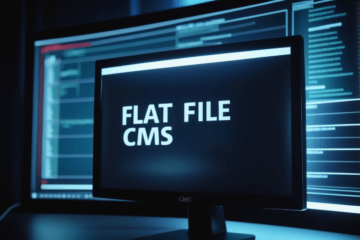For a significant period, this blog functioned under the care of Bludit CMS. However, as of yesterday, I’ve decided to transition my site to ClassicPress. Despite Bludit’s limitations and minor quirks, it served me well, offering a satisfactory experience for the most part.
Rationale for Transitioning Away from Bludit CMS
Transitioning from Bludit to ClassicPress for my personal blog offered enhanced functionality. ClassicPress helped with a seamless migration with its WordPress compatibility. I could benefit from a wider plugin ecosystem. As a mature WordPress fork, ClassicPress provides a familiar interface, facilitating an effortless shift. In light of these advantages, I identified three primary reasons for my decision to migrate to ClassicPress content management system:
The Table of Contents Challenge
A recurring suggestion from my readership and SEO analysis highlighted the need for a table of contents. My blog posts, given their length, would benefit significantly from this feature. Despite my best efforts, Bludit CMS failed to provide a satisfactory solution. Meanwhile, ClassicPress v2, based on WordPress 6.2, promised a wider range of compatible themes and plugins. This opened up the possibility to use the easy-toc plugin, which effortlessly integrates with ClassicPress.
Formatting Woes
Another recurring problem was formatting. My workflow includes recording voice notes for my blog posts, transcribing these, and subsequently utilizing AI tools to assist with structure, formatting, and grammar. Despite drafting in raw markdown, the pasting process into Bludit’s interface often led to an array of formatting issues. ClassicPress, on the other hand, proved a worthy adversary to these problems. My requirement was a content management system that would let me focus more on content creation rather than technical troubleshooting.
SEO Considerations
Visitor statistics from Bludit, Cloudflare, and Google Analytics confirmed that my blog was gaining traction. It felt only right to invest more time into improving the blog’s aesthetics, ensuring it was more user-friendly. WordPress themes, especially Rams and McLuhan for ClassicPress, were superior in this respect, as confirmed by the positive feedback from test readers.
The Tough Road to Transition
The decision to migrate was far from easy. I found myself spending substantial time grappling with Bludit themes, particularly Blogx. Despite liking its design, the issues were too numerous to ignore, such as stubborn CSS and formatting issues.
I also explored options like Espina, GitHub Blog, and Alternativex, downloading them from Bludit’s theme site (themes.bludit.com). While I appreciated the simplicity and speed of Bludit’s stock themes, my posts’ heavy text and media made these less suitable.

Page width was too wide, and on Sunday, the pagination disappeared.
Even though spending time on forum.bludit.net or soliciting help from chatGPT could have addressed some of these issues, I chose not to. Rather than registering and voicing my problems on the forum, I decided it would be more beneficial to concentrate on my content.
Decision to Migrate to ClassicPress
I had to make a choice: focusing on creating content that was readable and SEO-optimized, or spending time navigating different CMS options. I had already spent a considerable amount of time experimenting with themes and platforms. It was time to prioritize content creation. Hence, ClassicPress seemed like a sensible middle ground.
By the time I migrated, I had already installed ClassicPress version 1.6, released in early July 2023. I had set up a test site with version 2 ( which was in Alpha phase at the time.)
Update (3rd August ’23): The blog now operates on ClassicPress CMS version 2 preview edition, working largely without glitches.
On 3rd August, I migrated the site to a robust server, resulting in the staging site overwriting the main site which had version 1.6. However, given that the majority of the features were functional, I decided to continue with this setup. Having experimented with ClassicPress in the past, and written several posts [on this very blog](https://amar.link/notes/?s=classicpress), I am confident about the robustness of this CMS.
The Path Forward with ClassicPress
Post migration to ClassicPress, my focus will be on transferring content from Bludit to a ClassicPress test site. This process may lead to some downtime and occasional quirks needing attention, such as image rendering, and perhaps the addition of more plugins.
For those interested, I’ve penned several posts on my experiences with this content management system. I began my journey seeking a lightweight CMS supporting Markdown like Typemill. However,I found myself entangled in formatting challenges. I also considered non-WordPress CMS’es such as Dotclear, but the steep learning curve associated with new themes, plugins, and settings deterred me.
Thanking the Bludit CMS Community
I’m thankful to the Bludit developers and community for their work, and although I’ve switched platforms, I do hope to return to Bludit someday.
My quest for content management system has ended for now.

[cpseo_breadcrumb]


